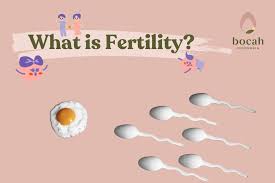Declining Fertility Rates in Jammu and Kashmir a challenge
Rameez Makhdoomi
The fertility rate is considered integral part to ensure the continuation of coming generations is showing a decline in Jammu and Kashmir, causing much worry in one and all .
As a matter of fact, The total fertility rate (TFR) of a population is the average number of children that would be born to a woman over her lifetime if:
She was to experience the exact current age-specific fertility rates (ASFRs) through her lifetime.
she was to live from birth until the end of her reproductive life.
Studies and surveys in recent years have shown that Jammu and Kashmir has a lower fertility rate than any state barring tiny Goa and Sikkim, these studies have often stoked much online and offline debate outhere.
The National Family Health Survey (2019-21) reveals a sharp fall in the total fertility rate (TFR) — the average number of children a woman bears in her lifetime — in Jammu and Kashmir from few years back 2.0 to current 1.4, far below the national average of 2.
It is worth noting here that
TFR, as per the survey, has witnessed a decline more in urban areas of Jammu and Kashmir. It has reduced from 1.6 in 2015-16 to 1.2 in 2019-20. In rural Jammu and Kashmir, the TFR has declined to 1.5 in 2019-20 from 2.2 in 2015-16.
Expert view has been that increasing entry of women into the workforce has also delayed marriages which is a top predictor for the number of babies a woman
In comparison, Uttar Pradesh has a TFR of 2.4, Bihar 3, Madhya Pradesh 2.0, Jharkhand 2.3, Punjab 1.6, Odisha 1.8, and Kerala 1.8. Only two states – Sikkim (1.1) and Goa (1.3) – and the Union Territories of Ladakh (1.3) and the Andaman and Nicobar Islands (1.3) have TFRs below Jammu and Kashmir’s.
In year 2024 one is witnessing infertility spreading and many couples struggling to have child.
Due to rising mental stress and changing food habits the infertility rates are increasing in Kashmir valley .Some expert voices in recent times have gone to extent of saying that infertility is found among 45 percent males and 35 percent females in Kashmir. Many couples now in Kashmir are going for IVF mode to have babies .
One hopes that we don’t let drop our Fertility Rates beyond an alarming level .
World Health Organization (WHO) states Infertility affects millions of people – and has an impact on their families and communities. Estimates suggest that approximately one in every six people of reproductive age worldwide experience infertility in their lifetime.
In the male reproductive system, infertility is most commonly caused by problems in the ejection of semen (1), absence or low levels of sperm, or abnormal shape (morphology) and movement (motility) of the sperm.
While as the female reproductive system, infertility may be caused by a range of abnormalities of the ovaries, uterus, fallopian tubes, and the endocrine system, among others.
The need of the hour is that We need to provide all the important mental health awareness to our young people as stress is the real reason behind poor health and infertility, we need to give them lot of positive energy in their struggles.
Eminent Gynaecologist of world, Dr. Swapna Mishra while talking to this correspondent opined that young boys and girls facing infertility issues should
Consume a balanced diet and introduce exercise in your daily routine. Try to plan a baby before 35 years of age. Late marriage should be avoided.




